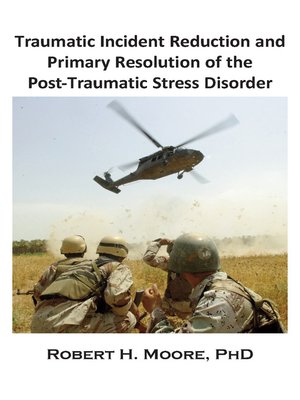Traumatic Incident Reduction (TIR) and Primary Resolution of the Post-Traumatic Stress Disorder
ebook
By Robert H. Moore

Sign up to save your library
With an OverDrive account, you can save your favorite libraries for at-a-glance information about availability. Find out more about OverDrive accounts.
Find this title in Libby, the library reading app by OverDrive.



Search for a digital library with this title
Title found at these libraries:
| Library Name | Distance |
|---|---|
| Loading... |
In the early 1990s, significant media attention was given to the Post-Traumatic Stress Disorders (PTSD) of Vietnam veterans, whose post-war "nervous" problems (i.e., sleep disturbances, hypervigilance, paranoia, panic attacks explosive rages, and intrusive thoughts) were known to veterans of earlier campaigns as "battle fatigue," "shell shock," and "war neurosis" (Kelly, 1985). As any number of mugging, rape, and accident victims have demonstrated, however, one need not have been a casualty of war to experience the problem. PTSD appears in children as well as adults (Eth & Pynoos, 1985) and has been attributed to abuse, abortions, burns, broken bones, surgery, rape, overwhelming loss, animal attacks, drug overdoses, and other conditions. Dr. Moore explains the theory of Traumatic Incident Reduction (TIR) and how it can be applied to PTSD.
For more information, please visit www.TIR.org







